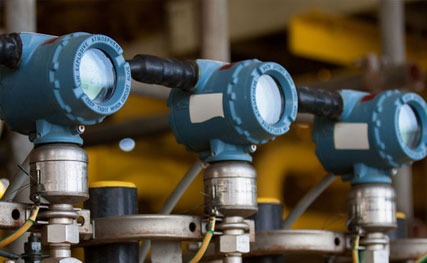The role of instrumentation in industrial processes is pivotal, serving as the backbone of operational efficiency, safety, and data acquisition. In various sectors, from petrochemical to pharmaceuticals, instrumentation facilitates the precise control and monitoring of complex systems. This article elaborates on the multifaceted role of instrumentation, dissecting its types, functions, and significance within industrial settings.
1. Defining Industrial Instrumentation
Instrumentation encompasses a variety of devices and systems designed to measure, control, and monitor physical quantities such as temperature, pressure, flow, and level. The evolution of industrial instrumentation has been dramatic, transitioning from rudimentary gauges to advanced digital sensors integrated with data analytics and automation technologies. This evolution has rendered instrumentation more integral to process optimization and control.
2. Types of Instrumentation
Instrumentation is classified into several categories based on measurement techniques, application areas, and types of processed signals. The primary types include:
- Analytical Instruments: These devices analyze physical and chemical properties, such as pH meters and gas chromatographs. Their role is critical in ensuring product quality and compliance with regulatory standards.
- Control Instruments: Control loops, often composed of sensors, controllers, and actuators, maintain desired process conditions. PID (Proportional-Integral-Derivative) controllers exemplify this category, ensuring that systems operate within predefined parameters.
- Field Instruments: Situated at the point of measurement, these instruments include pressure transducers and temperature sensors. They convert physical variables into electrical signals that can be further processed and interpreted.
- Data Acquisition Systems: These systems compile data from various instruments, allowing for real-time monitoring and historical analysis. Data loggers and SCADA (Supervisory Control and Data Acquisition) systems exemplify this, playing a crucial role in decision-making.
3. Functions of Instrumentation
Instrumentation serves three primary functions: measurement, control, and communication. Each function is interrelated, ensuring that industrial processes operate seamlessly.
3.1 Measurement
At its core, instrumentation measures process variables with a high degree of precision. This accurate measurement is vital for maintaining quality control in manufacturing environments. For instance, measuring the flow rate of a liquid in pipelines requires instruments that can withstand harsh conditions while delivering reliable data. Anomalies detected in these measurements can signify underlying issues, enabling preventive rather than reactive maintenance.
3.2 Control
Once measurements are obtained, the next logical step is the control of these variables. Automated control systems adjust parameters based on feedback from the measurement devices, ensuring optimal operational conditions. For example, in a distillation column, the temperature must be controlled meticulously to separate components effectively. Control instrumentation enables operators to maintain this temperature within critical thresholds, thus optimizing separation efficiency and minimizing energy consumption.
3.3 Communication
In contemporary industrial environments, effective communication between instruments and operators is paramount. Modern instrumentation often features wireless technology, enabling seamless data transfer and remote monitoring. This connectivity enhances operational flexibility, allowing for interventions without necessitating physical presence at the machine’s location. Such capabilities are particularly vital in hazardous environments where operator access might pose safety risks. Enhanced communication ensures that operators can make informed decisions based on real-time data, fostering a proactive approach to process management.
4. Benefits of Instrumentation in Industrial Processes
The advantages of implementing robust instrumentation systems are considerable:
- Increased Efficiency: By maintaining optimal control over process variables, instrumentation can significantly reduce operational downtime, boost production rates, and improve overall system efficiency.
- Cost Reduction: Accurate measurements and control can lead to reduced waste and lower energy consumption, translating to substantial cost savings for industries. This economic advantage is particularly critical in competitive market landscapes.
- Enhanced Safety: In industries handling hazardous materials, instrumentation plays a crucial role in monitoring safety parameters. Continuous evaluation of conditions allows for the swift detection of potential hazards, thus mitigating risks of accidents and ensuring compliance with safety regulations.
- Data-Driven Decision Making: Continuous data acquisition enables businesses to leverage analytics for informed decision-making. Analyzing historical data trends can provide insights into operational inefficiencies and predictive maintenance opportunities, greatly enhancing productivity.
5. The Future of Instrumentation
As industries advance towards the Fourth Industrial Revolution, the role of instrumentation is poised to evolve drastically. The integration of artificial intelligence (AI) and machine learning (ML) into instrumentation will facilitate predictive analytics, allowing for even more sophisticated decision-making capabilities. Furthermore, the Internet of Things (IoT) will enable extensive interconnectivity among devices, streamlining communication and enhancing the visibility of operations across the supply chain.
6. Conclusion
Instrumentation is indispensable in modern industrial processes, being integral to measurement, control, and communication. Each function of instrumentation not only enhances operational efficiency but also safeguards quality and safety. Advances in technology signal a bright future for instrumentation, with innovations set to redefine how industries achieve their operational goals. As such, investment in sophisticated instrumentation systems is essential for organizations aiming to navigate the increasingly complex and competitive global market.










